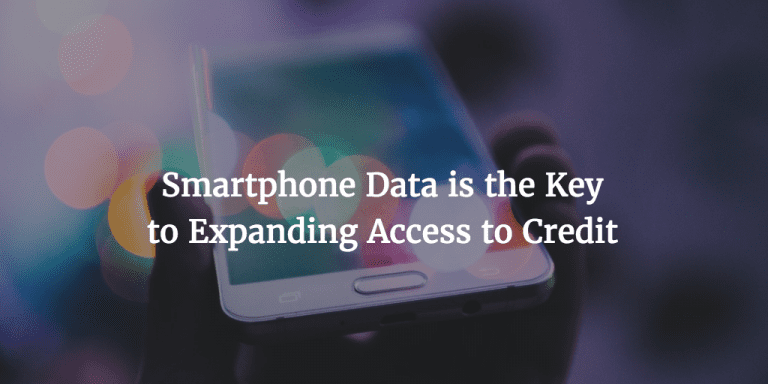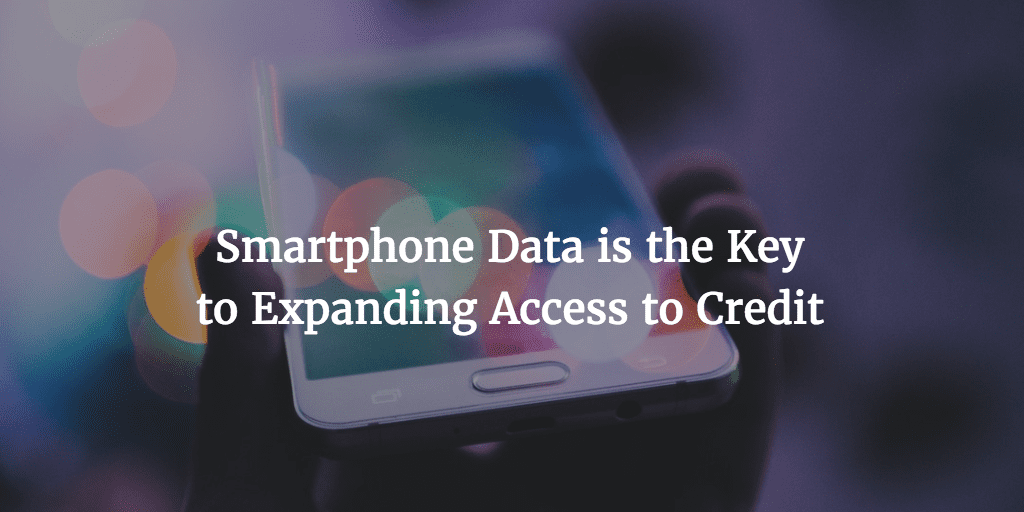The average American checks their phone 47 times a day according to this study by Deloitte. The number is much higher (82) if you are in the 18-24 year old age bracket. We keep our lives on our phones and so it has become the most essential piece of technology we own.
With all that usage comes a treasure trove of data. Now, this also brings with it a host of privacy issues but that is not the focus for this article. What I am talking about here is smartphone data and how companies can leverage this to expand access to credit. This particularly applies to the underbanked consumers in this country and more importantly in developing countries.
For many consumers their access to credit is limited because they have little or no credit footprint. They may operate primarily with cash, have no credit score and are therefore unable to qualify for a loan from most lenders. Their credit needs are often more urgent than the mid-prime and prime consumer but because lenders have little or no data they have difficulty in obtaining credit.
This problem is particularly acute in the developing world. Here, most people are outside the traditional financial system, if there even is one, and do not have access to credit. But that is changing as companies like Kiva, Lenddo (listen to Episode 91 of the Lend Academy Podcast), Branch and Juvo (see this session at LendIt USA 2017) are helping consumers get access to credit, often for the first time.
What lenders are finding out is that even when there is no credit data available the data that is inside a consumer’s smartphone can be very predictive of creditworthiness. I think Lenddo (they are a technology provider, not a lender) is doing some of the best work in the space as they have a great deal of experience in many different countries using data contained in smartphones to score consumers. In this country LendUp and Elevate are also doing good work and I like Oakam in the UK.
Underwriting is All About Data
The reality is this. Underwriting is all about data. Whether you are pulling a detailed credit report or analyzing gigabytes of smartphone data to make a credit decision you need to create underwriting models that are predictive. With artificial intelligence and deep learning techniques being applied to credit risk we are seeing the possibility of dramatically expanding access to credit to people throughout the world. Never before have we had this much data and the tools to create predictive models from this data. The challenge, of course, is to separate the actual signals from the noise in this data.
What is some of the smartphone data that is being used? When you ask the companies doing this they point to all kinds of data: recharge history is an important one (most consumer in the developing world are on pay as you go plans), social media activity, location based data, phone calls and texting connections just to name a few. There is also more data that lenders can use during the loan application process – how a user interacts with the input fields on an application can be quite predictive.
Obviously, there are regulatory issues using some of this data to underwrite loans in this country and in many countries around the world. It is important for lenders to only use data that adheres to regulatory standards in their respective countries. Just because we have predictive data doesn’t mean we can always use it. But many developing countries are motivated to provide more access to credit as it is a way to foster economic growth and so are often engaged with service providers and lenders who can help drive access.
Do We Even Need Credit Data?
I was on a panel at the annual conference of the Cambridge Center for Alternative Finance last month where we discussed this very topic. I made the point that today many of the companies working in developing countries can underwrite successfully without any credit data. I wondered out loud whether or not developing countries even need credit reports or a strong credit bureau infrastructure when there is so much alternative data that is predictive. I think most people would say that credit bureau data is still very important and clearly loan payment history is the most predictive of all data. But companies today are getting so good at modeling that with smartphone data credit bureau information is not essential.
While 77% of Americans now have a smartphone that percentage is far smaller in developing countries where there are few traditional avenues for credit. And it is these smartphone that contain this rich data that companies can use. What is also clear is that smartphone penetration is growing. Cisco predicted that by 2020 more people (5.4 billion) around the world will own smartphones than have electricity (5.3 billion).
At the same time advances in artificial intelligence will lead to even better predictive algorithms than we have today. We could well see a revolution in credit access in a very short time period due to this confluence of factors. It is going to fascinating to watch this all develop.



